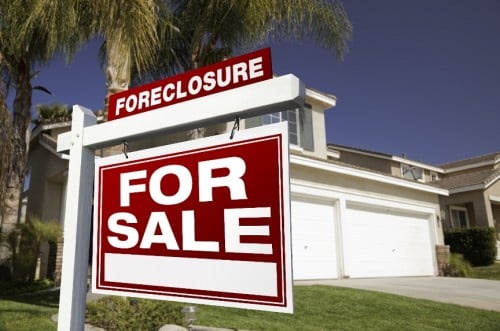On February 9, 2012, the federal government and 49 attorneys general announced a settlement with the nation’s five largest mortgage providers: Ally Financial, Bank of America, Citigroup, JP Morgan, and Wells Fargo. Under the mortgage settlement, these institutions will pay $26 billion to address mortgage loan servicing and foreclosure abuses.
Terms of the Settlement
Under the terms of this agreement, the nation’s biggest banks, which were originally rescued by taxpayer funds, are finally being required to fix their mistakes and wrongs. Specifically, the settlement is intended to help right wrongs committed against millions of Americans related to the “robo-signing” scandal, whereby banks processed foreclosures without adequate legal records. Of course the settlement amount pales in comparison to the several trillion dollars lost in the housing bubble, but there are some concrete ways in which the settlement, widely distributed among homeowners and former homeowners, helps the average American:
Principal Reduction
The largest component of the settlement will reduce loans for families who are “underwater” on their mortgages (owing more on home loans than their homes are worth). Under its terms, settlement funds of up to $20 billion will be used to lower the principal owed on loans by about approximately one million people who are both underwater on their mortgages and delinquent on their payments.
Interest Rate Refinancing
The settlement will also provide refinancing opportunities for borrowers who are current on their mortgages, but unable to refinance from a high interest rate to a lower interest rate without assistance. Given the incredibly low interest rate environment refinancing from a higher interest rate can benefit borrowers considerably. The five banks agreed to commit $3 billion to help homeowners refinance at 5.25 percent.
Direct Payments
It’s interesting to note that these two settlement items largely don’t involve cash payments, rather they involve the forbearance of future income or return of principal. The largest out-of-pocket expense will be made to state and federal governments, who will in turn oversee payment to the hundreds of thousands of people who lost their homes through bank malfeasance. These individuals will receive a small measure of justice, of between $1,500 and $2,000.
Limited Pool of Borrowers
Unfortunately, the settlement does not help borrowers whose mortgages are not owned by the institutions involved in the settlement. For individuals whose loans have been bundled up and sold in mortgage-backed securities, including those owned or insured by government agencies Freddie Mac and Fannie Mae, they’re out of luck. The settlement does not apply to them.
It also does not help borrowers who are current on their mortgages. These individuals may be underwater as well, barely able to make their mortgage payments and not able to refinance to a lower interest rate. No luck though, current borrowers are not within the scope of the settlement. This implication, that borrowers are being rewarded for their being delinquent has left a bitter taste in the mouths of many borrowers who are current on their mortgages.
This bitterness has left many citizens wondering whether there is anything in it for them?
The straightforward answer is that there is not, at least not directly. Most Americans won’t come home to find a check waiting for them or receive their next mortgage statement to find that their principal has been halved. However, the settlement is likely to have some positive indirect effects on the overall United States housing market.
A Rising Tide Lifts all Boats?
As has been discussed in great lengths, keeping people in their homes helps everyone. Each borrower who receives an interest rate reduction or a mortgage principal forbearance is more likely to be able to afford their monthly payment. For the most part the citizens assisted by the settlement are just barely holding on to their homes. Removing a million or two homes from possible short-sale or foreclosure sale will significantly reduce the number of homes on the market.
As that population dwindles and the banks work through their inventory of foreclosed properties, home prices across the board should see a lift. Whether the settlement will be enough to counter the pending foreclosures already underway is up for debate.
The Lawsuits aren’t Over
While the settlement resolves claims from the state attorneys general, individual homeowners still retain private rights of action to sue over foreclosure fraud and other abuses. In fact, the settlement provides states with a certain amount of money to fund legal aid services. Homeowners and legal aid services will then be empowered to contest future wrongful foreclosures.
Phillip Reeves is a freelance writer who has covered the housing meltdown extensively. Mr. Reeves recently refinanced his house to take advantage of the historicaly low interest rates and used the services of the team at http://www.personalhomeloanmortgages.com to do so.















